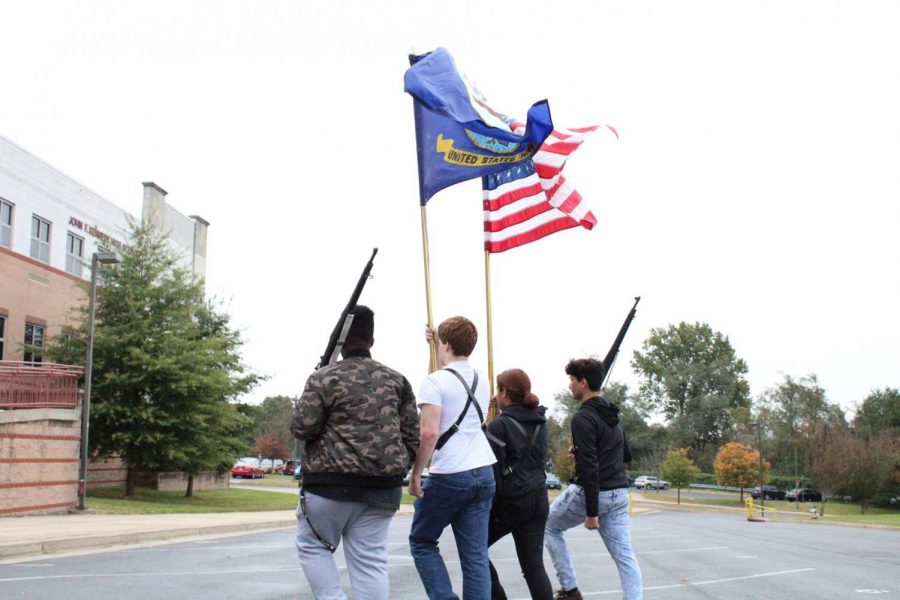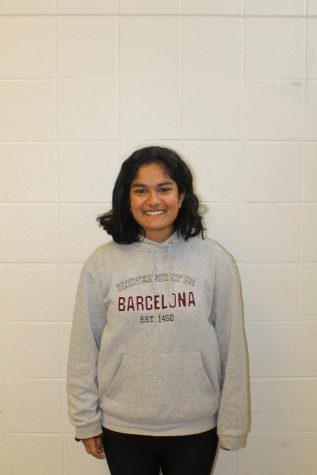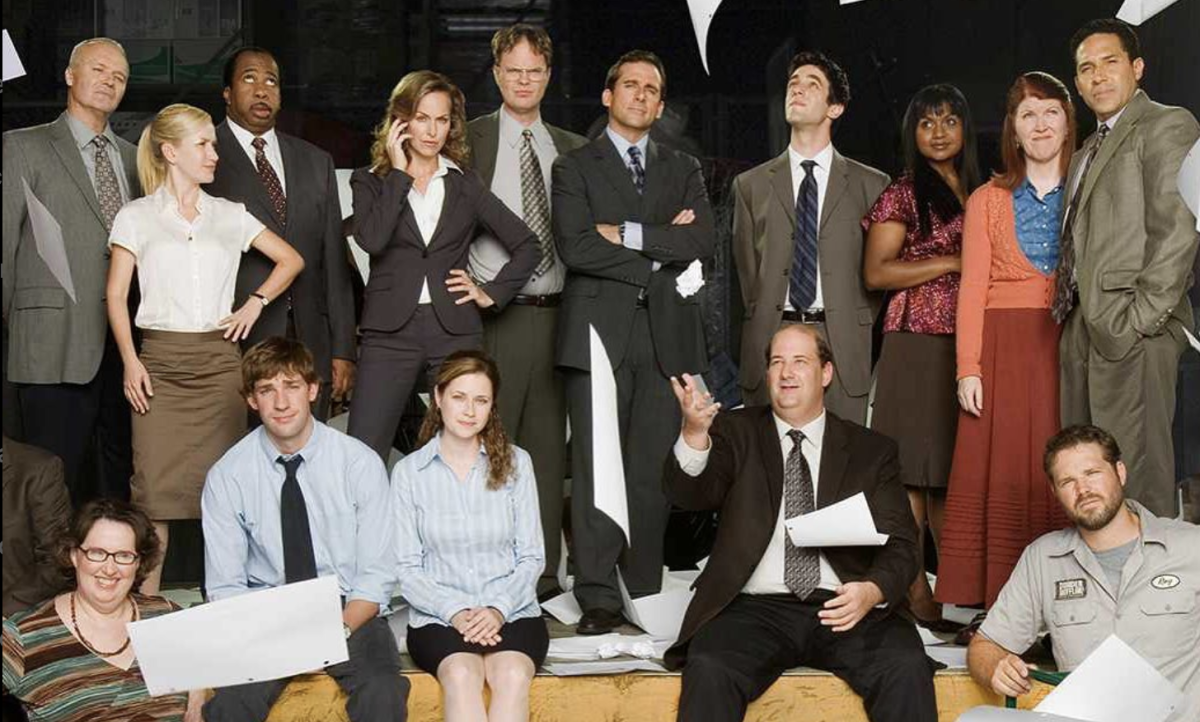“This is my family”: Kennedy H.S. NJROTC creates community
Student cadets learn naval core values, leadership in specialized program
Four cadets march forward to the cadence: left, left, left, right, left. This is the color guard, a competition team in Kennedy’s NJROTC program.
January 14, 2019
“Attention on Deck! Good afternoon Ma’am!” one cadet yells above the chatter. He’s the first one to spot Chief Petty Officer Sharon Rogers.
Thirty cadets quickly stand up straight and square their shoulders back. In unison, they yell, “Attention on deck! Good afternoon!”
For other students at John F. Kennedy High School, it’s lunchtime. But for students in the school’s Naval Junior Reserve Officers Training Corps, classroom 132 has transformed into a naval base with the highest-ranking officer present on deck. Cadets have to be ready.
Kennedy is one of five MCPS high schools that has a JROTC program. It has around 125 cadets. NJROTC is a two-part program and was added in 2001. The first part is inside the classroom: students learn skills, discipline and information of their respective branch in the military. The second part is performance-based: cadets perform with their peers to appear like a “unit” when they march or drill. Their end goal is to act as one.
Rogers is a driving force of the program. She directs practices with strict discipline and holds students accountable for their actions inside and outside NJROTC. She also teaches classes Naval Science 1 and 2. Rogers was a part of Air Force JROTC when she was in high school, and said she took the instructor position at Kennedy because she was inspired by prior instructors and wanted to share her experiences after serving in the Navy. The leader of a JROTC program must have served in the branch of the military that the program specializes in, Rogers said. Because Rogers served in the Navy from 1990 to 2012, Kennedy’s JROTC program specializes in the naval training.
The offered academy programs differ between each Downcounty Consortium high school to attract students with specific interests toward potential career paths.. The Choice Process allows interest in academy programs to be a deciding factor in their DCC application for high school.
The goal in NJROTC is to make students better citizens and leaders, not just to prepare them for the military, academy coordinator Kevin Jefferson said. Many students were attracted to Kennedy for its NJROTC program, counselor Lexanne Wilson said.
“Students see the ways that they can grow with leadership qualities—abilities that they acknowledge they want to grow before they get to college,” Wilson said.
Vicente chose Kennedy for its NJROTC program over her home school of Wheaton. At Wheaton, she felt that she was closed off from her true feelings, she said. But after being a part of the Kennedy NJROTC program, she feels that she now has a new “family.”
“It’s helped me open up more because I used to be shy and I didn’t have friends because I was bullied,” Vicente said. “When I came here, I felt like I found my place and could be open to people around me. It hit me. ‘This is my family.’ I felt like I belonged.”
NJROTC has three meetings throughout the day. The first is informal and during fifth period lunch, where students listen to announcements about upcoming meets and talk to their squad leaders. In the second meeting, small groups called “squads” take a required naval class where they learn military team orders, naval core values and ship structures.
The third meeting is after school. The team goes to the parking lot to practice their competition routines.
In the parking lot, cadets direct their attention to Cadet Lieutenant Commander Alex Guerra as he loudly calls out orders. There are two groups that form: color guard and drill team.
The color guard is a competition team where two cadets carry drill purpose rifles that have been altered so they no longer can be fired, and the other two cadets carry the American and Navy flags. After walking 18 counts, the cadets file into one line and march military-style. They swing “march left turn” to assume final position so Rogers can check their form.
The second, bigger group is the drill team. Here, Guerra commands a group of 12 cadets. As he starts off with “right face,” each cadet begins: with military precision, they walk down to the end of the lot. Vicente, the squad leader, said leading is nerve-wracking because one mistake means the other cadets also mess up which leads to points missed in competition.
Competitions are often performed at other school gyms. On the floor, cadets are judged on the march with their platoon. Cadets can also be quizzed on military trivia while on the floor. Judges base points off of the cohesion of the performance, military bearing, and whether cadets adopt a military mindset, he said.
Still, education is the top priority for Rogers. Cadets need a 2.0 GPA to stay within NJROTC. Rogers has removed members who don’t reach the cut-off.
“The second-highest cadet, the commanding officer, was failing a class,” Rogers said. “She was not setting a standard for other kids. To her, it was all about the position and not taking care about yourself academically. I took the position from her.”
Rogers also emphasizes that NJROTC cadets have to give back to the communities and be something bigger than themselves.
“The most ‘selfish’ thing you’ll do when you help someone is feel good,” she said.
At Kennedy food drives, cadets will often “jump in” to help people carry the food to their cars, Rogers said. They also march at Housing and Urban Development events and lay wreaths at Arlington cemetery every December.
The team bond in NJROTC is apparent. Students tend to stay at practice after it ends, Rogers said.
“They are very close-knit, they learn from each other, guide from each other, they lift each other up. It creates confidence,” Rogers said. “They grow into these confident people and next thing you know, they’re leading their peers.”









